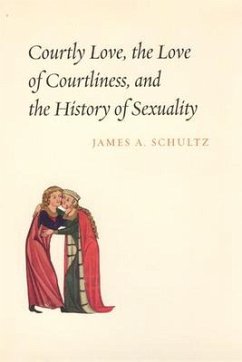What can the study of courtly love and the history of sexuality learn from each other? In Courtly Love, the Love of Courtliness, and the History of Sexuality, James A. Schultz draws on key texts from the German tradition to explore the answers to this question. From the history of sexuality, Schultz shows, one learns to be suspicious of modern assumptions about the male and female body, the origin of desire, and the categories of sexuality. He finds that courtly love is not provoked by sex difference or an intrinsic desire but by extrinsic signs of class status: bodies that are visibly noble and behaviors that manifest exemplary courtliness. From the study of courtly love the history of sexuality can come to terms with a topic it has generally ignored but that represents nevertheless one of the most consequential medieval discourses on bodies and their pleasures, an object of fascination to contemporaries and an influence on European thinking about love for centuries. Compared to other "sexualities," courtly love exhibits an extraordinary congruence with social forms. It manifests itself as courtly discipline, through rituals of welcome or knightly service. It promises not only the joy of lovemaking but also the distinction that accrues to those who have mastered the disciplines of courtliness. It represents the eroticization of noble status and courtly culture: the love of courtliness.
Hinweis: Dieser Artikel kann nur an eine deutsche Lieferadresse ausgeliefert werden.
Hinweis: Dieser Artikel kann nur an eine deutsche Lieferadresse ausgeliefert werden.








